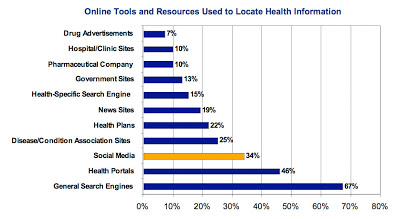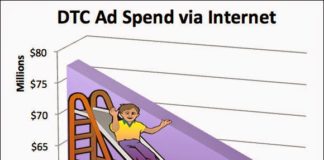 There’s nothing like a little FDA letter writing campaign to stir the pot! Yes, I’m talking about the 14 letters FDA sent out on April 2, 2009, informing 14 pharmaceutical companies that their paid search ads violated FDA regulations regarding fair balance. That really stirred the simmering Internet guidelines pot that many people want to bring to the front burner!
There’s nothing like a little FDA letter writing campaign to stir the pot! Yes, I’m talking about the 14 letters FDA sent out on April 2, 2009, informing 14 pharmaceutical companies that their paid search ads violated FDA regulations regarding fair balance. That really stirred the simmering Internet guidelines pot that many people want to bring to the front burner!
To mark this special occasion, the April 2009 issue of Pharma Marketing News is focused on social media, patient empowerment (which is powered by social media), and the constraints of regulation.
Paid search ads are old school compared with social media marketing. I can’t help but wonder what kind of trouble pharmaceutical marketers can get into when they really delve into social media. Is the FDA right now working on letters that address current social media activities?
FDA regulation of drug marketing via the Internet in general and social media in particular is a hot topic at industry conferences. Next month I will be participating in a panel discussion on social media hosted by the PharmaSIG of the Philadelphia American Marketing Association (PAMA). The topic will be “Pharmaceutical Marketing Within Today’s Social Media Culture – Opportunity or Nightmare?” (see here for more information and to register).
This Could Be Hell!
Michaelangelo’s nightmarish painting Last Judgement includes the image of a poor soul being dragged down to Hell by the devil’s agents. That image often comes to mind when I hear proponents of social media trying to persuade pharma marketers to just “dip their toe” in the social media waters. The other image I see is a shark lurking just below the water’s surface!
There is no doubt, however, that social media and net-working are becoming integral parts of our society and a growing resource helping consumers manage their own healthcare. Where these consumers lead, pharma is sure to follow.
Here’s some data I received from Michele Aranda (Weyth), who is helping organize the PAMA panel discussion:
- Social Media sites are the fastest growing category on the web–doubling their traffic over the past year (ComScore, 2008)
- A single word of mouth conversation has the impact of 200 TV commercials (Buzz Agent, 2008)
- 34% of adult online users (54 million people) in the U.S. said they have connected to others or to the content others created online about health and wellness issues in the past year (“Online Health: Assessing the Risk and Opportunity of Social and One-to-One Media,” Jupiter Research, 2007 )
- 72% of people use social media sites “all or some of the time” to educate themselves about specific medical conditions (iCrossing survey via Greenfield Online, 2008)
- Nearly half (47%) of online consumers report that user-generated content has at least some impact on their health or prescription treat-ment decisions (Manhattan Research, 7th ePharma Consumer survey, 2008)
- The average person can share health information with a 50-person network within 30 days (“Influencers and Health Advertising”, MedTrackAlert and Interactive Media Studies (IMS) Program at Miami University in Oxford, Ohio Study, 2007)
 Source: iCrossing, How America Searches Health and Wellness, January 2008. Click to enlarge.
Source: iCrossing, How America Searches Health and Wellness, January 2008. Click to enlarge.
Pharma marketers are navigating uncharted territory in the social media space. They are just starting to experiment with Facebook pages, corporate blogs and YouTube but they are faced with unknown risks. Regulations have not kept up. When DTC is addressed in DDMAC or PhRMA documentation, the channels discussed are limited to traditional broadcast (TV and Radio) and print. Marketers and regulatory professionals are being forced to apply regulations based on their own ad hoc interpretations.
Should We Go Public?
In the article “Developing Guidelines for Pharma’s Use of the Internet & Social Media” (PMN Reprint #84-01), a case is made to initiate a public process to inform the FDA about social media prior to issuing guidance. Many people feel that informed guidance from the FDA is better than regulation via warning letters.
Many pharma marketers within drug companies and within agencies that work for drug companies are trying to move the needle forward to develop guidelines that the industry can follow. So far, however, they have left patients, physicians and other stakeholders out of the discussion. They have forgotten that patient empowerment built the very social networks that they wish to engage in. Personally, I believe pharmaceutical companies need to become truly patient-centric companies BEFORE they can even consider engaging in social media. And they have a long way to go before they get there.
Don’t Forget the Patient!
The article “The Empowered Patient: What It Means for Pharma” (PMN Reprint #84-02) is a review of a presentation made by Reinhard Angelmar, Professor of Marketing at INSEAD, at the recent eyeforpharma SFE Europe 2009 conference held in Barcelona, Spain. Angelmar makes a case for the drug industry to adopt a patient-centric model in which pharma companies can develop unique expertise in decoding the behavior, needs, motivations of patients. Without a patient-centric focus such as Angelmar suggests, pharma marketers will have little success engaging consumers and patients in social media even if they have FDA guidance and guidelines out the wazoo!
Doctors Too!
Not only will empowered patients radically change pharma marketing and sales, so will doctors who are engaging in social networks, according to a LinkedIn survey by Len Starnes, Head of Digital Marketing & Sales General Medicine at Bayer Schering. Starnes spoke at the recent ExL Pharma Digital Pharma Europe conference.
While experts predict that social media will have a great effect on pharmaceutical marketing, many of us view the drug industry as being “social media challenged.” That’s the view, at least, of contributing author Erik van der Zijden–entrepreneur, marketing professional, new media evangelist and self-styled “autodidactic techno-nerd.” His article, “Socially Challenged Pharma” (PMN Reprint #84-03), is a summary of the Digital Europe conference. To support van der Zijden’s thesis, I added recent data from the “Social Media Pharma Marketing Readiness Self-Assessment Survey,” which has been hosted online by Pharma Marketing News since December 2007.
To overcome the challenges, proponents of social media pharma marketing are busy collaborating. For example, Shwen Gwee, Lead Business Analyst of Health Informatics and New Media for Vertex Pharmaceuticals, organized the Social Pharmer “Unconference” in which attendees heard from and interacted with some great speakers and vowed to continue the discussion online. Amber Benson, Group Strategy Director for IMC2’s Health & Wellness practice, summarizes key presentations made at this “unconference” (see “Report from the Social Pharmer ‘Unconference’”; PMN Reprint #84-04).
So far, we do not know whether social media will be an opportunity or a nightmare for the pharmaceutical industry. It may be both! Out of adversity comes opportunity. But the one piece of advice that I’d like to leave you with is what was said at the Social Pharmer unconference: Be careful what you wish for.








![6 Digital Tools at the Center of Healthcare Digitalization [INFOGRAPHIC]](http://ec2-54-175-84-28.compute-1.amazonaws.com/pharma-mkting.com/wp-content/uploads/2021/04/6DigitalTools_600px-100x70.jpg)




